Check Engine Light After Dead Battery (Causes & How To Reset It)
Did you just get a check engine after a dead battery? Are you looking for more information on what this means and how to solve it? If yes, this guide is for you.
Check engine light (CEL) after dead battery occurs due to low system voltage caused by the low battery charge. Obtaining the trouble codes will be a good starting point when trying to fix this issue.
We have researched more about the check engine light showing up after a dead battery and found loads of helpful information that we’re going to share with you below.
What causes check engine light after a dead battery?
Getting check engine light after a dead battery is a commonly experienced problem among vehicle owners. The light usually comes on after you get a dead battery and jumpstart your car.
This light is a warning about low system voltage, which is easy to understand given that you have a dead battery.

As you may already know, many control modules of your vehicle, including the onboard computer, require a good voltage supply to function properly.
If the battery voltage is low (i.e., dead battery), the computer and the other components will be voltage starved. And the check engine warning lights will definitely appear, and the affected system operations will fail.
The best action here is to have your battery checked and charged to clear the error codes for the engine light.
If the voltage is good, the battery should read 12.5 Volts when connected to a multimeter. If the voltage is low, then you need to have the car diagnosed at your local auto parts shop.
Car batteries usually have a lifespan of around 3-5 years, after which they should be replaced. If your battery is getting weak of late, you should consider replacing it to avoid receiving the check engine light warnings more often.
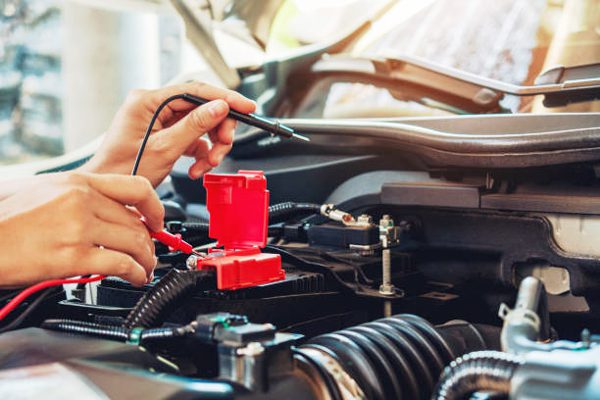
As we always advise you, it is a good thing to have the trouble codes that activated the CEL read and deciphered.
The codes will help you narrow things down and know where to look, making it much easier to solve your vehicle’s underlying issue.
How do I clear my check engine light after a dead battery?
Clearing the check engine light after a dead battery is one way of solving the underlying problem. And there are several ways to do it.
The first method is to take your vehicle through serval drive cycles. If the problem is simply low voltage, the light will most likely clear itself in most cars.
The other method is to disconnect the battery. You just unhook the negative battery terminal and let it stay for about 15-20 minutes. Then, reconnect the negative terminal cable and see if the error codes and the CEL clears themselves.
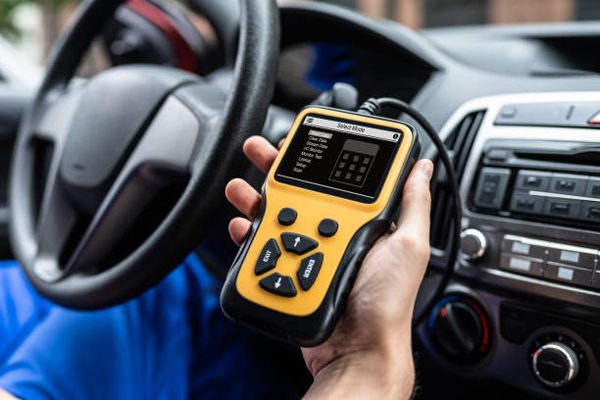
You can also clear the CEL using an OBD-2 scanner if you have one. A typical scanner costs around $100 and will come in handy when you want to erase the error codes from your vehicle.
Alternatively, you can take your car to the dealership or a competent auto repair mechanic to clear the code for you. They’ll use a scanning tool to read the clear the code for you for free.
If the light comes back after you reset it, then the underlying problem hasn’t been fixed and you need to look for a professional mechanic to diagnose and fix the issue.
Can a faulty battery cause check engine light?
Yes, a bad battery can also cause the check engine light to come on. When the battery is bad, it can’t supply enough voltage to the car’s components, affecting most of its functionalities, including the engine.
A damaged battery is also unable to supply the right amount of voltage to the vehicle’s computer. The computer doesn’t like this and will throw a faulty code, which often triggers the check engine light to come on.
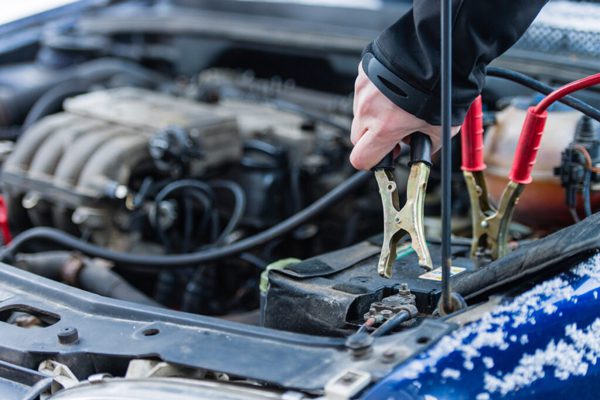
If you have a newer model of car, you’ll also get a battery warning light on the dashboard in addition to the check engine light.
To fix this issue, you need to inspect the battery and if it’s in bad condition, it can no longer live up to its task and you’ll need to replace it with a new one.
Can a corroded battery wire cause check engine light?
Yes, corroded battery wire or terminal can cause the check engine to come on. It will be a case of poor electric connection, and the sensors will most likely register low voltage.
This will cause the check engine light to come on since most of the sensors in your vehicle rely on voltage as control.
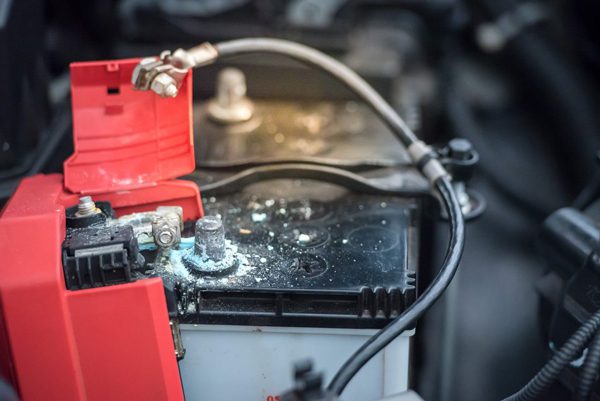
However, after you start the car and it starts running, most of the voltage gets supplied by the alternator and not the car battery.
It is good to have your battery terminals and cables inspected as part of the diagnosis for low system voltage.
How do you tell if the problem is your battery or your alternator?
Sometimes your battery may not be bad, but the alternator could be the issue. It could be not charging your battery, causing the low system voltage warning lights to pop on.
You can easily check whether the battery or the alternator is the problem by using this elimination method:
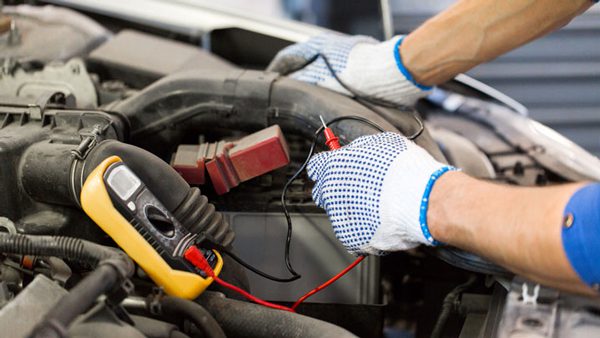
Simply jumpstart your car. If the engine starts and then dies immediately, your alternator could be the problem as it isn’t keeping the battery charged. Checking additional symptoms of a bad alternator will give further insights into the state of your alternator.
These symptoms include growling/whining noises, frequent stalling, starting issues, lights getting dim or overly bright, etc.
If the car starts and the car keeps running after the jump start, but the vehicle can’t start again on its own power, then you have a dead battery.
If you’re experiencing a check engine light after a dead battery, there could be several reasons behind it. One possible cause is an issue with the charging system, which can trigger the check engine light to come on after the battery has been replaced. However, if you have already checked the charging system and the light is still on, you may want to consider other causes, such as issues with the battery itself or the legality of its removal. Our articles on troubleshooting check engine light issues can provide valuable insights into the problem. For example, if you’re experiencing a check engine light after changing your battery, our article on after battery change may be helpful. This article covers common causes and solutions for check engine light issues that arise after changing your battery. Similarly, if you’re unsure about the legality of removing your vehicle’s catalytic converter and are experiencing a check engine light, you may want to read our article on removal legal or illegal. This article discusses the laws surrounding catalytic converter removal and potential causes for check engine light issues. Take a look at these articles for expert advice on diagnosing and fixing check engine light issuesFAQs:
1. Can a dead battery cause check engine light?
Yes, a weak battery can cause check engine light. This is because when it is in the undercharged state, it won’t be able to deliver the correct amount of voltage to your vehicle’s computer. This may result in low voltage faulty codes which then trigger the light to come on. For newer car models, the CEL may also be accompanied by a low battery warning on the dashboard.
2. What causes check engine light after dead battery in Ford F150?
If you see check engine light after dead battery in Ford F150, this is probably triggered by a low voltage code. It comes on as a result of the dead battery being unable to supply the correct voltage to the vehicle computer and other vehicle components that rely on voltage to function properly.
Final Verdict
If you just had a dead car battery and jumpstarted it, you’ll get an error code that triggers the check engine light to come on. This is usually activated by a low system voltage faulty code. Your vehicle computer hates running on low voltage. A handful of other components in your vehicle also rely on consistent voltage flow to function properly, and they’ll trigger the CEL if they don’t receive enough voltage.
The check engine light will most likely clear itself after a few drive cycles. You can also reset it using a scanning tool or have a local auto parts shop do it for you. Disconnecting the battery for at least 15 minutes can also help clear it. If the light comes back on after clearing, it means the underlying problem hasn’t been resolved and you need to get a mechanic to diagnose and fix it.

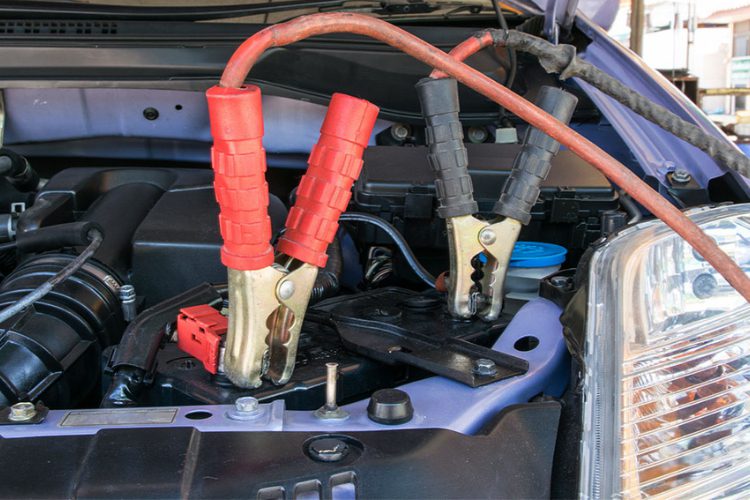
Good info. On my 2022 Diesel Suburban the batt was dead, really really dead as in zero and couldn’t unlock truck with fob. Being a diesel my handy emergency battery pack couldn’t do it. Got a jump start from another diesel. Check ENgine Light stayed on. I drove around charged the battery, did several more starts but CEL stayed on. It then advised me to lower the and raise the passenger window.. I did and shut engine off and restarted . CEL was OFF. Now all I need to do is find out why the battery went that dead that fast!!!